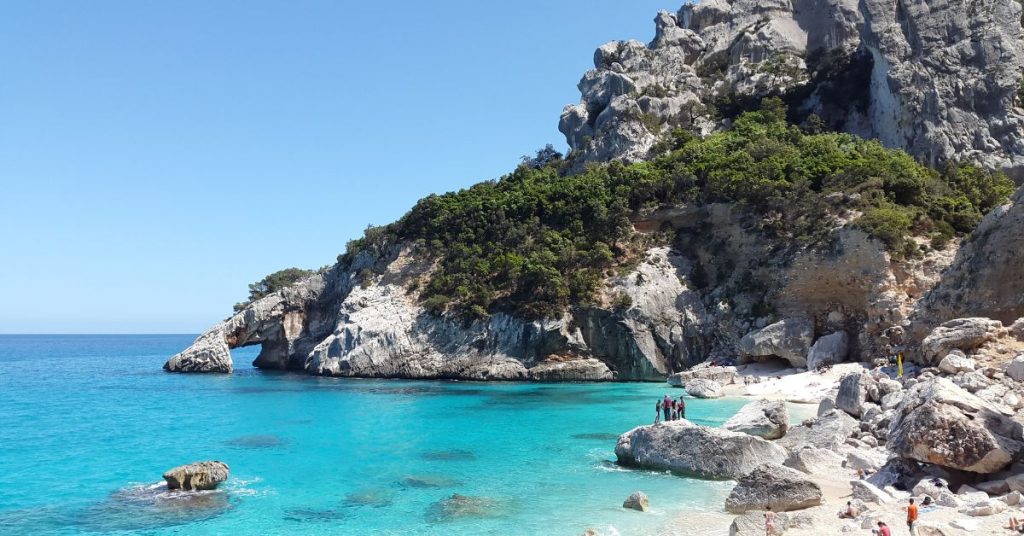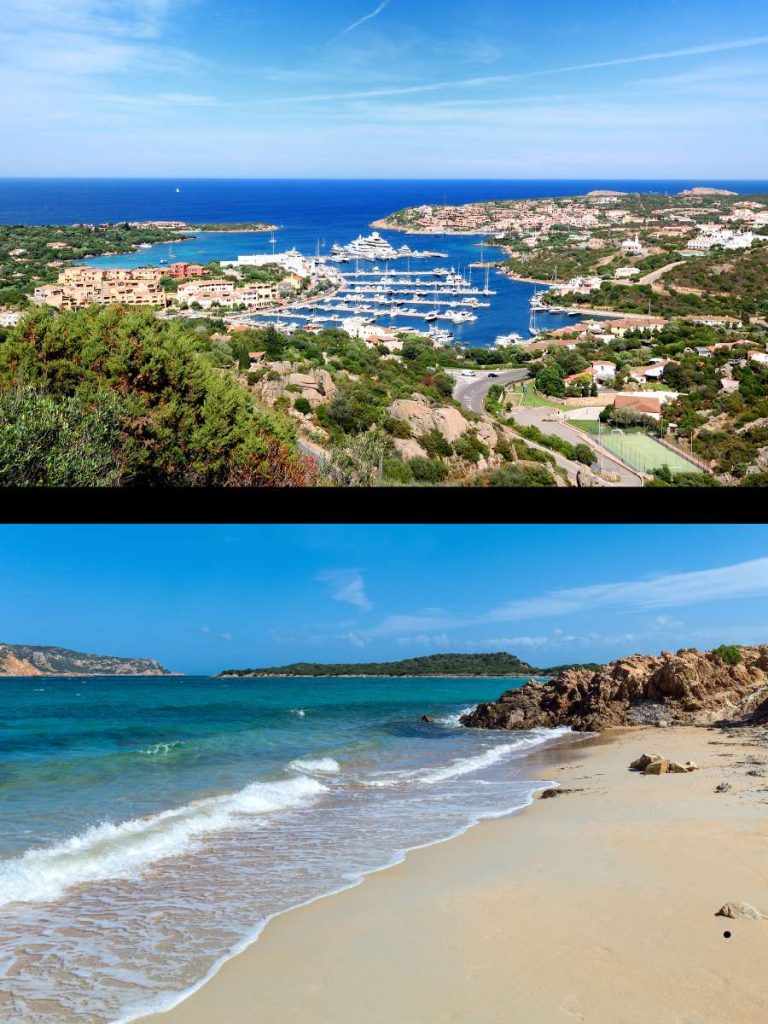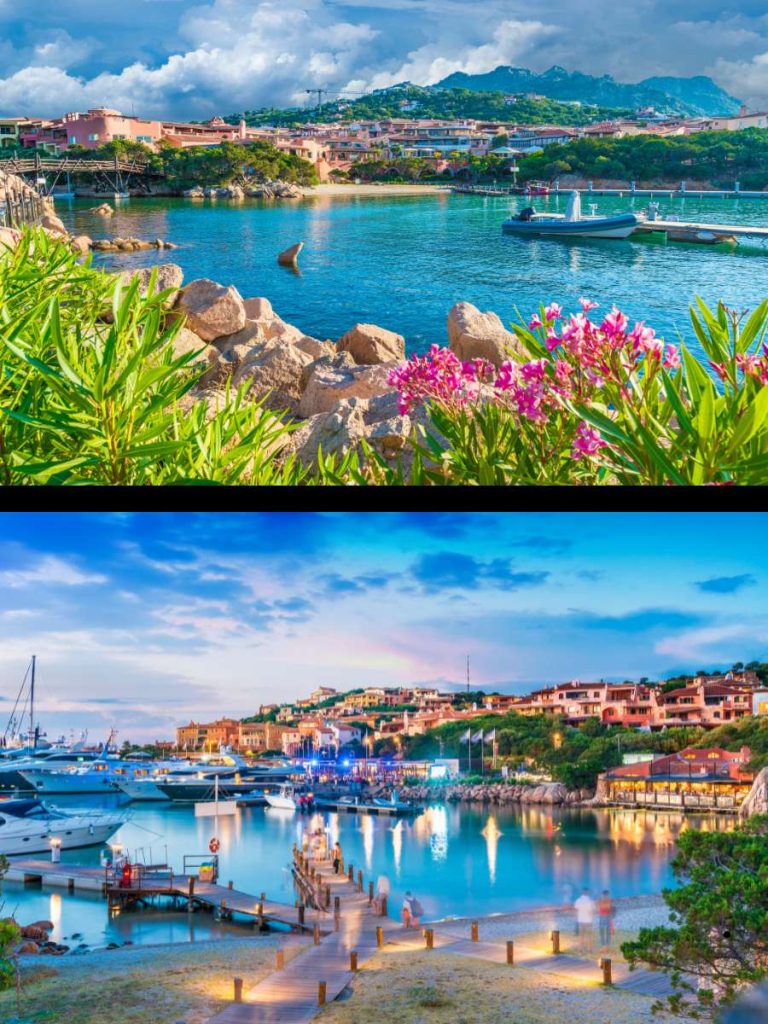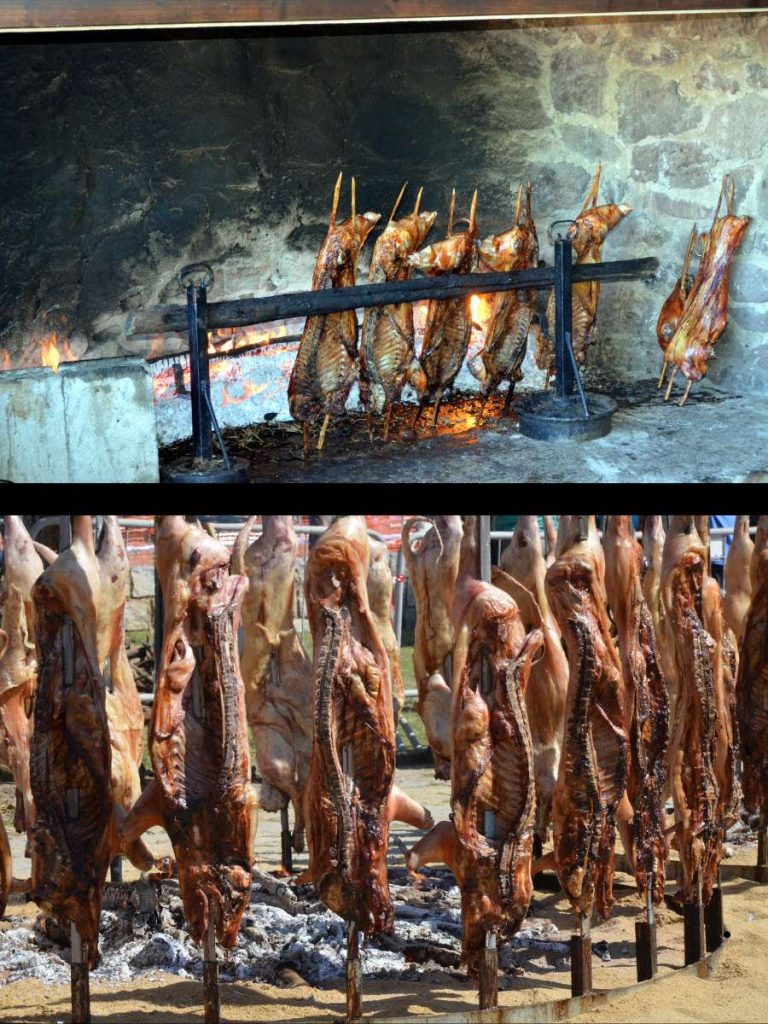Sardinia, Italy’s hidden gem in the heart of the Mediterranean, is a place that captures the imagination with its pristine beaches, rugged landscapes, and ancient history. Unlike the more famous Italian destinations like Rome, Venice, or Florence, Sardinia offers a unique blend of natural beauty, cultural richness, and a slower pace of life that appeals to travelers seeking an authentic and unforgettable experience. Whether you’re a beach lover, a history enthusiast, or an adventure seeker, Sardinia has something for everyone.

But Sardinia isn’t just about sunbathing on white sandy beaches or exploring ancient ruins—though it certainly excels at both. It’s about immersing yourself in a way of life that has remained remarkably unchanged for centuries. It’s about savoring the flavors of Sardinian cuisine, where every dish tells a story of tradition and the island’s connection to the land and sea. It’s about wandering through charming villages where time seems to stand still, and meeting locals who are eager to share their love for their homeland.
In this guide, we’ll take you on a journey through Sardinia’s must-see destinations, hidden gems, and insider tips to ensure you have the best experience possible. From practical advice on getting there and where to stay, to exploring the island’s diverse landscapes and indulging in its culinary delights, this article covers everything you need to know to make your trip to Sardinia truly unforgettable. So pack your bags, open your heart, and get ready to discover the magic of Sardinia.
Getting to Sardinia
A. Travel Options
Reaching Sardinia is an adventure in itself, offering travelers a variety of ways to arrive at this beautiful island. Whether you prefer the convenience of air travel or the scenic route via sea, Sardinia is well-connected to both mainland Italy and other parts of Europe.
Flights: The most straightforward way to get to Sardinia is by plane. The island is served by three main airports: Cagliari Elmas Airport (CAG) in the south, Olbia Costa Smeralda Airport (OLB) in the northeast, and Alghero-Fertilia Airport (AHO) in the northwest. These airports connect Sardinia to major European cities, with direct flights available from hubs like Rome, Milan, London, and Paris. To get the best deals, it’s wise to book your flights in advance, especially if you’re traveling during the peak summer season.
Ferries: For those who enjoy a more leisurely journey, taking a ferry to Sardinia is a fantastic option. Ferries run regularly from various ports in mainland Italy, including Genoa, Livorno, and Civitavecchia, as well as from nearby islands like Corsica. The ferry ride allows you to bring a car, which can be incredibly convenient for exploring Sardinia’s diverse landscapes at your own pace. The trip can take anywhere from 6 to 12 hours, depending on the departure point and the type of ferry you choose, with options ranging from basic seating to luxury cabins.
Tips for Choosing the Best Mode of Transportation: If you’re short on time and prefer convenience, flying is your best bet. However, if you’re planning an extended stay and want the freedom to explore off-the-beaten-path destinations, consider taking the ferry and bringing a car. This way, you can easily access Sardinia’s remote beaches, mountains, and villages that are often difficult to reach by public transportation.
B. Best Time to Visit

Sardinia’s charm is evident year-round, but the experience varies greatly depending on when you visit. Understanding the island’s seasonal rhythms will help you choose the best time to travel based on your preferences and interests.
Spring (April to June): Spring is one of the best times to visit Sardinia, with mild temperatures, blooming wildflowers, and fewer tourists. This season is perfect for hiking, exploring historical sites, and enjoying the island’s natural beauty without the summer crowds. It’s also a great time to experience local festivals, such as the Feast of Sant’Efisio in Cagliari, a colorful celebration that dates back centuries.
Summer (July to August): Summer is Sardinia’s high season, attracting visitors with its warm weather and crystal-clear waters. If your idea of a perfect vacation involves lounging on the beach, swimming, and indulging in vibrant nightlife, then summer is the ideal time for you. However, keep in mind that popular areas like Costa Smeralda can get crowded, and prices for accommodations and activities are at their peak.
Autumn (September to October): Autumn is another excellent time to visit Sardinia. The weather remains warm, the sea is still pleasant for swimming, and the summer crowds have thinned out. It’s also harvest season, making it an ideal time for food lovers to enjoy fresh produce, wine tasting, and traditional Sardinian dishes.
Winter (November to March): Winter is Sardinia’s low season, with cooler temperatures and fewer tourists. While it’s not the best time for beach activities, it’s perfect for exploring the island’s cultural and historical sites without the crowds. Plus, winter offers the opportunity to experience Sardinia’s unique Carnival celebrations, which are rich in tradition and folklore.
Where to Stay in Sardinia

A. Best Areas to Stay
Choosing where to stay in Sardinia depends largely on the type of experience you’re looking for. The island is divided into several distinct regions, each with its own character and attractions.
Costa Smeralda: Located in the northeast, Costa Smeralda is the epitome of luxury in Sardinia. Known for its stunning beaches, upscale resorts, and glamorous nightlife, it’s the place to be if you’re looking for a high-end vacation. Porto Cervo, the region’s main hub, is a playground for the rich and famous, offering designer boutiques, fine dining, and exclusive beach clubs. However, even if you’re not a millionaire, you can still enjoy the area’s natural beauty by exploring its more secluded beaches and coves.
Alghero: Situated on the northwest coast, Alghero is a charming town with a unique Catalan influence. Its historic old town, with narrow cobblestone streets, medieval walls, and stunning sea views, makes it a great place to stay if you’re interested in history and culture. Alghero is also a fantastic base for exploring nearby natural attractions, such as Neptune’s Grotto and the Capo Caccia cliffs.
Cagliari: As the capital of Sardinia, Cagliari offers a vibrant mix of history, culture, and modern amenities. Staying in Cagliari gives you easy access to a variety of attractions, from ancient Roman ruins and museums to lively markets and bustling nightlife. The city is also close to some of Sardinia’s best beaches, such as Poetto Beach, making it a convenient location for both city and beach lovers.
Nuoro and the Barbagia Region: For a more authentic Sardinian experience, consider staying in Nuoro or the surrounding Barbagia region. This area is known for its rugged landscapes, traditional villages, and rich cultural heritage. It’s perfect for travelers who want to delve deeper into Sardinian traditions, explore the island’s mountainous interior, and enjoy outdoor activities like hiking and mountain biking.
B. Accommodation Options
Sardinia offers a wide range of accommodation options to suit every budget and preference, from luxury resorts to cozy guesthouses.
Luxury Hotels and Resorts: If you’re looking to splurge, Sardinia has no shortage of luxury accommodations, particularly in Costa Smeralda. Here, you’ll find world-class resorts offering private beaches, gourmet restaurants, spa services, and stunning views of the Mediterranean. Some of the top luxury hotels in Sardinia include Hotel Cala di Volpe, Petra Segreta Resort & Spa, and Villa Las Tronas.
Budget-Friendly Options: For travelers on a budget, Sardinia has plenty of affordable options, including B&Bs, guesthouses, and hostels. These accommodations offer comfort and convenience without breaking the bank, and many are located in scenic areas or charming towns. Look for B&Bs in smaller towns like Bosa or Oristano, where you can experience local hospitality and enjoy a more relaxed pace of life.
Unique Stays: If you want to experience something truly special, consider staying in an agriturismo—a traditional farmhouse that offers accommodations and meals made from locally sourced ingredients. Agriturismos are scattered across Sardinia, particularly in the countryside, and provide a unique opportunity to experience rural Sardinian life. Other unique stays include boutique hotels in historic buildings, seaside villas, and eco-friendly lodges.
Tips for Booking the Best Accommodations: To get the best deals, book your accommodations well in advance, especially if you’re traveling during the summer months. If you’re planning to visit multiple regions of Sardinia, consider staying in different areas to fully experience the island’s diversity. Additionally, reading reviews and checking amenities before booking can help ensure a comfortable and enjoyable stay.
Top Things to Do in Sardinia

A. Exploring the Beaches
Sardinia is famous for its stunning beaches, which are among the most beautiful in the world. Whether you’re looking for a lively beach scene or a secluded spot to relax, Sardinia has something for every beach lover.
La Pelosa: Located near the town of Stintino in the northwest, La Pelosa is often considered one of the most beautiful beaches in Italy. Its soft white sand and shallow, crystal-clear waters create a Caribbean-like setting that’s perfect for swimming, snorkeling, and sunbathing. Due to its popularity, La Pelosa can get crowded during the summer, so it’s best to arrive early in the morning or visit during the off-season.
Cala Luna: Situated on the east coast, Cala Luna is a picturesque beach accessible by boat or a challenging hike through the Supramonte mountains. The beach is framed by towering limestone cliffs and caves, making it a favorite spot for adventurers and nature lovers. Cala Luna’s turquoise waters are ideal for swimming, and the surrounding area offers excellent opportunities for hiking, rock climbing, and exploring hidden coves.
Spiaggia di Tuerredda: Located in the south, Spiaggia di Tuerredda is a stunning crescent-shaped beach with calm, clear waters and fine sand. The beach is ideal for swimming, snorkeling, and kayaking, and its scenic beauty makes it a popular spot for photography. Despite its popularity, Spiaggia di Tuerredda remains relatively uncrowded compared to other beaches, especially during the shoulder seasons.
Cala Goloritzé: One of Sardinia’s most iconic beaches, Cala Goloritzé is a UNESCO World Heritage site known for its dramatic limestone cliffs, emerald waters, and unique rock formations. The beach is accessible only by a 90-minute hike or by boat, which helps preserve its pristine condition. Cala Goloritzé is a must-visit for anyone looking to experience Sardinia’s natural beauty in its purest form.
Tips for Beach Hopping in Sardinia: To make the most of your beach experience, consider renting a car so you can easily access Sardinia’s more remote beaches. Bring plenty of water, sunscreen, and snacks, as amenities at some beaches may be limited. If you’re visiting during the summer, arrive early to secure a good spot, and be prepared for crowds at the more popular beaches.
B. Discovering Sardinia’s History and Culture
Sardinia’s rich history and unique culture are evident in its ancient ruins, traditional festivals, and charming villages. Exploring these cultural treasures will give you a deeper understanding of the island and its people.
Nuraghe Su Nuraxi: One of Sardinia’s most important archaeological sites, Nuraghe Su Nuraxi is a UNESCO World Heritage site located near the town of Barumini. This ancient fortress dates back to the Bronze Age and is part of the island’s unique nuragic civilization, which built thousands of stone towers (nuraghi) across Sardinia. A visit to Su Nuraxi offers a fascinating glimpse into Sardinia’s prehistoric past and the island’s mysterious ancient culture.
Alghero’s Old Town: Alghero’s old town is a charming blend of medieval architecture, narrow streets, and Catalan influence. The town’s historic center is surrounded by ancient walls and offers stunning views of the Mediterranean. Strolling through Alghero’s cobblestone streets, you’ll discover beautiful churches, lively piazzas, and hidden courtyards. Don’t miss the chance to visit the Cathedral of Santa Maria, the Church of San Francesco, and the Torre di Sulis for a deeper insight into the town’s history.
Sardinia’s Festivals: Sardinia’s festivals are a vibrant celebration of the island’s culture, traditions, and religious heritage. One of the most famous festivals is the Feast of Sant’Efisio, held annually in Cagliari. This colorful event, which dates back to 1657, honors the island’s patron saint with a grand procession, traditional costumes, and music. Another important festival is the Carnival of Mamoiada, known for its distinctive “Mamuthones” masks and costumes, which are rooted in ancient rituals and folklore.
Exploring Sardinia’s Villages: Sardinia’s villages are the heart and soul of the island, offering a glimpse into its traditional way of life. Villages like Bosa, with its colorful houses along the Temo River, and Orgosolo, known for its striking murals, are must-visit destinations for anyone interested in Sardinian culture. These villages are also home to local artisans who produce traditional crafts, such as handwoven textiles, pottery, and jewelry.
C. Outdoor Activities and Adventures
Sardinia’s diverse landscapes offer endless opportunities for outdoor activities and adventures. Whether you’re into hiking, biking, or water sports, there’s something for everyone to enjoy.
Hiking in the Supramonte Mountains: The Supramonte mountains are a rugged and remote area of central Sardinia, offering some of the best hiking opportunities on the island. Trails range from easy walks to challenging treks, with stunning views of limestone cliffs, deep gorges, and ancient forests. One of the most popular hikes is the trek to Tiscali, an ancient nuragic village hidden within a mountain cave. Another must-do hike is the descent to Cala Goloritzé, a beautiful beach accessible only by foot or boat.
Cycling in the Marmilla Region: The Marmilla region in southern Sardinia is a cyclist’s paradise, with rolling hills, quiet roads, and picturesque villages. Cycling through this area, you’ll encounter ancient nuraghi, Roman ruins, and traditional farmhouses. The region is also home to the Giara di Gesturi, a high plateau known for its wild horses and unique flora. Cycling tours are available, or you can explore the region on your own with a rented bike.
Water Sports on the Costa Smeralda: The crystal-clear waters of the Costa Smeralda are perfect for a variety of water sports, including snorkeling, scuba diving, and sailing. The area is known for its underwater caves, vibrant marine life, and stunning coral reefs. Sailing enthusiasts can charter a boat to explore the coast and nearby islands, while divers can explore the underwater world at sites like the Secca del Papa and the Grotta del Nereo.
Canyoning in the Gola di Gorropu: The Gola di Gorropu, often referred to as the “Grand Canyon of Europe,” is a spectacular gorge in the Supramonte mountains. It’s a popular destination for canyoning, an adventure sport that involves descending through canyons using a combination of hiking, climbing, and rappelling. The gorge’s towering cliffs, crystal-clear pools, and lush vegetation create a breathtaking setting for this thrilling activity.
Tips for Enjoying Outdoor Adventures: Always check the weather forecast and be prepared for changing conditions, especially in the mountains. If you’re new to an activity, consider joining a guided tour to ensure your safety and get the most out of your experience. Bring plenty of water, snacks, and appropriate gear, and be respectful of Sardinia’s natural environment by following Leave No Trace principles.
Sardinian Cuisine: A Culinary Journey

A. Traditional Dishes You Must Try
Sardinian cuisine is a reflection of the island’s history, geography, and traditions. The food is hearty, flavorful, and made with fresh, locally sourced ingredients. Here are some traditional dishes you shouldn’t miss during your visit.
Culurgiones: Culurgiones are a type of stuffed pasta, similar to ravioli, that originated in the Ogliastra region. These delicious dumplings are filled with a mixture of potatoes, pecorino cheese, garlic, and mint, and are traditionally sealed with a unique braid-like pattern. Culurgiones are typically served with a simple tomato sauce and a sprinkle of pecorino cheese.
Porceddu: Porceddu, or roast suckling pig, is one of Sardinia’s most famous dishes. The pig is slow-roasted over an open fire for several hours until the skin is crispy and the meat is tender and flavorful. Porceddu is often served at special occasions and family gatherings, accompanied by roasted potatoes and seasonal vegetables.
Pane Carasau: Pane Carasau, also known as “carta da musica” (music paper), is a traditional Sardinian flatbread. This thin, crispy bread is made from durum wheat flour, water, yeast, and salt, and is baked twice to achieve its characteristic crunch. Pane Carasau is often served as an accompaniment to meals, or it can be used as a base for dishes like pane frattau, where it’s layered with tomato sauce, poached eggs, and grated pecorino cheese.
Malloreddus: Malloreddus, also known as “Sardinian gnocchi,” are small, ridged pasta shapes made from semolina flour. This pasta is typically served with a rich tomato and sausage sauce, and topped with grated pecorino cheese. Malloreddus are a staple of Sardinian cuisine and are often featured in local festivals and celebrations.
Seadas: Seadas are a traditional Sardinian dessert made from fried pastry filled with fresh pecorino cheese and drizzled with honey. The combination of the crispy pastry, creamy cheese, and sweet honey creates a unique and delicious flavor that is sure to satisfy your sweet tooth.
B. Wine and Cheese
Sardinia is renowned for its wine and cheese, which are an integral part of the island’s culinary heritage. The island’s unique climate and terrain contribute to the production of high-quality wines and cheeses that are enjoyed both locally and internationally.
Cannonau Wine: Cannonau is Sardinia’s most famous wine, made from the Grenache grape variety. This red wine is known for its rich, full-bodied flavor, with notes of dark fruit, spice, and herbs. Cannonau is often paired with grilled meats, hearty stews, and aged cheeses. The wine is also celebrated for its high levels of antioxidants, which some believe contribute to the islanders’ longevity.
Vermentino Wine: Vermentino is a white wine variety that thrives in Sardinia’s coastal regions. This wine is light, crisp, and refreshing, with flavors of citrus, green apple, and floral notes. Vermentino pairs well with seafood, salads, and light pasta dishes, making it a perfect choice for a warm summer day.
Pecorino Sardo: Pecorino Sardo is a traditional Sardinian cheese made from sheep’s milk. This cheese comes in two varieties: Pecorino Sardo Dolce, which is mild and creamy, and Pecorino Sardo Maturo, which is aged and has a stronger, more intense flavor. Pecorino Sardo is often grated over pasta dishes, served with honey or jam, or enjoyed on its own with a glass of Cannonau wine.
Fiore Sardo: Fiore Sardo is another famous Sardinian sheep’s milk cheese, known for its smoky flavor and firm texture. This cheese is traditionally made by shepherds in the mountainous regions of the island and is aged for several months to develop its distinctive taste. Fiore Sardo is often used in cooking, grated over pasta, or enjoyed with bread and olives.
C. Where to Eat: Sardinia’s Best Restaurants
Sardinia is home to a wide range of restaurants, from family-run trattorias to upscale dining establishments. Here are some of the best places to enjoy traditional Sardinian cuisine.
Su Gologone, Oliena: Su Gologone is a renowned restaurant and hotel located in the heart of Sardinia, near the town of Oliena. The restaurant is famous for its authentic Sardinian dishes, made with fresh, local ingredients. The menu features specialties like culurgiones, porceddu, and seadas, as well as a wide selection of Sardinian wines. The rustic setting and beautiful views of the surrounding countryside make Su Gologone a must-visit for food lovers.
Ristorante Dal Corsaro, Cagliari: Located in the capital city of Cagliari, Ristorante Dal Corsaro is an upscale restaurant known for its creative take on traditional Sardinian cuisine. The menu features dishes like tuna tartare with citrus and fennel, roasted lamb with myrtle, and a decadent chocolate dessert inspired by the island’s flavors. The restaurant also offers a tasting menu, allowing diners to experience a variety of Sardinian dishes in one meal.
Trattoria Lillicu, Cagliari: For a more casual dining experience, Trattoria Lillicu in Cagliari’s Marina district is a great choice. This family-run trattoria has been serving traditional Sardinian dishes for over 70 years, with a focus on fresh seafood. The menu includes dishes like spaghetti with bottarga (cured fish roe), grilled fish, and fregula (a type of Sardinian pasta) with clams. The laid-back atmosphere and friendly service make Trattoria Lillicu a favorite among locals and visitors alike.
Agriturismo Sa Mandra, Alghero: Agriturismo Sa Mandra is a farm-to-table restaurant located near the town of Alghero. The restaurant is part of a working farm, and many of the ingredients used in the dishes are produced on-site. The menu features traditional Sardinian dishes like porceddu, malloreddus, and pane carasau, as well as homemade bread, cheese, and desserts. Dining at Sa Mandra offers a true taste of Sardinia’s rural cuisine and a chance to experience the island’s agricultural traditions.
Conclusion
Sardinia is a destination that captivates the heart and soul with its stunning landscapes, rich history, vibrant culture, and mouthwatering cuisine. Whether you’re lounging on one of its pristine beaches, exploring ancient ruins, hiking through rugged mountains, or savoring a delicious meal at a local trattoria, Sardinia offers an unforgettable experience that will leave you longing for more.
The island’s unique blend of natural beauty, cultural heritage, and culinary delights make it a must-visit destination for any traveler seeking an authentic and enriching experience. From the turquoise waters of the Costa Smeralda to the ancient nuraghi scattered across the countryside, Sardinia is a place where tradition and nature coexist in perfect harmony.

